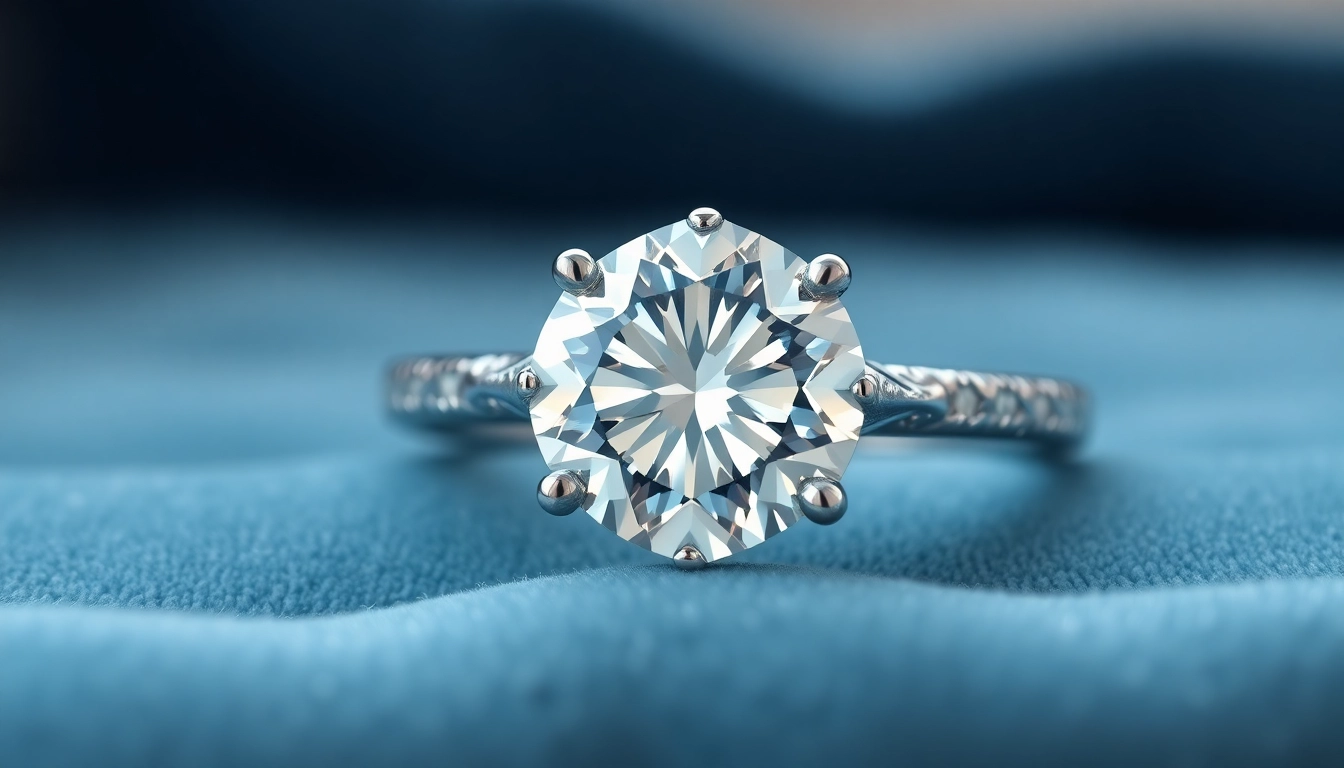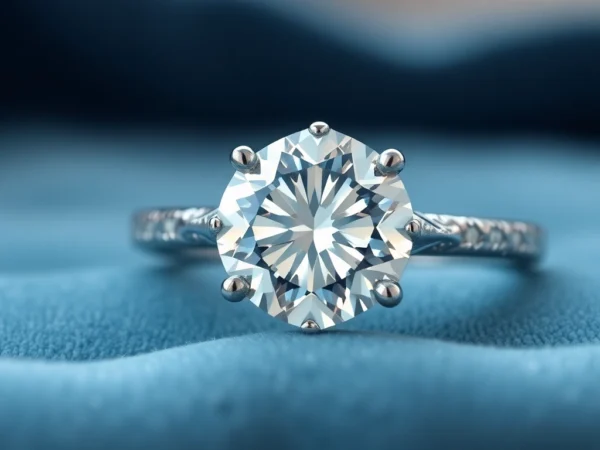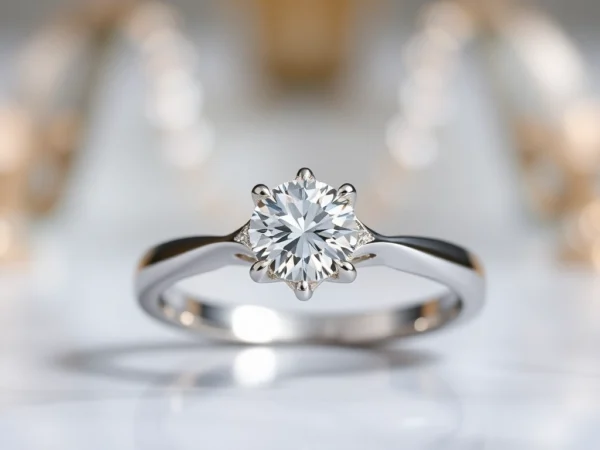How to Select the Perfect 1 Carat Diamond Engagement Ring for Lasting Love
Understanding the Key Features of a 1 Carat Diamond Engagement Ring
Selecting the perfect engagement ring with a 1 carat diamond is a significant milestone in symbolizing love and commitment. To make an informed decision, it’s essential to understand the critical features that influence the ring’s brilliance, value, and overall aesthetic. One of the most prominent considerations is the quality of the diamond cut, which ensures maximum brilliance and fire. A well-cut diamond optimizes light reflection, making even the simplest design radiate with internal sparkle. When exploring 1 carat diamond engagement ring, the cut quality significantly impacts its brilliance, hence prioritizing diamonds with Excellent or Very Good cut grades is advisable.
Diamond Cut: Ensuring Maximum Brilliance
The cut of a diamond is paramount; it remises how well the diamond interacts with light. For a 1-carat stone, the ideal cut will reflect most light through the top, creating captivating sparkle. Popular shapes include round, princess, and cushion cuts, each offering a distinct style yet equally emphasizing brilliance. An expertly cut diamond would have proportions, symmetry, and polish that maximize its optical performance, making it appear more vibrant and larger than its actual size. Investing in a certified cut quality guarantees your ring’s stunning visual impact.
Carat Weight and Size Perception
While a 1-carat diamond is often thought of as a benchmark size representing elegance and luxury, the visual impact also depends on the diamond’s shape and how it is set. Shape and proportions influence perceived size, with elongated cuts like oval or marquise appearing larger than a similarly weighted round diamond. Additionally, an expertly crafted setting enhances the size impression. Although the weight is fixed at 1 carat, discreet design choices such as a halo or prong settings can augment the apparent size, making the ring more impressive without necessarily increasing costs.
Metal Types and Settings for Durability and Style
The choice of metal dramatically affects both the durability and aesthetic of the engagement ring. Platinum and white gold are popular options for their durability and luxurious appearance, especially in settings that showcase the diamond. Platinum provides hypoallergenic qualities and inherent strength, making it ideal for daily wear. Gold variants—14K or 18K—offer warmth and versatility. Settings such as four-prong, bezel, or halo not only securely hold the diamond but also influence its brilliance. For a 1-carat stone, a classic solitaire setting emphasizes the stone’s size and quality, while more elaborate settings add personalized flair.
Choosing the Right Design and Style for Your Engagement Ring
Classic vs Modern Styles with 1 Carat Diamonds
The timeless elegance of a solitaire with a 1-carat diamond embodies traditional romance, emphasizing the diamond’s size and clarity. Conversely, modern designs incorporate intricate band details, mixed metals, or asymmetrical accents to reflect individuality. For example, a halo setting around the central stone can enhance its size and brilliance, creating a more striking visual. Both styles can be customized to suit personal taste—selecting a sleek minimalist band or a vintage-inspired motif ensures that the ring resonates with the wearer’s personality.
Importance of Band Width and Shape
The band’s width and shape play critical roles in balancing comfort and aesthetics. Narrow bands (2-3 mm) evoke delicacy, highlighting the diamond, whereas wider bands (4-6 mm) offer sturdiness and a bold statement. Rounded, flat, or tapered shapes influence how the ring sits on the finger and interacts with the center gemstone. For a 1-carat diamond, a proportionate band—neither too thin nor overly bulky—complements the stone’s presence, ensuring comfort for everyday wear and a harmonious overall appearance.
Personalizing with Unique Accents and Inscriptions
Personal touches elevate the emotional value of the engagement ring. Incorporating small side stones, engraved messages, or birthstones can add layers of sentimental significance. For instance, a ring with micro pavé diamonds surrounding the main stone enhances sparkle and grandeur. Alternatively, inside the band, a discreet engraving—such as initials or a date—serves as a private reminder of the love story. These customizations make the ring truly unique and reflective of the couple’s journey.
Guide to Certification and Quality Assurance
Recognized Diamond Grading Reports
Prior to purchase, verify that your diamond comes with a reputable grading report from organizations such as GIA, AGS, or IGI. These certificates provide an unbiased assessment of the diamond’s characteristics, including the 4Cs. A detailed report ensures transparency regarding cut, color, clarity, and carat weight, protecting your investment and confirming authenticity. For a 1-carat diamond, certification is especially crucial to ensure you are acquiring a stone that meets high standards and offers value for money.
Interpreting the 4Cs: Color, Clarity, Cut, Carat
Understanding the 4Cs is vital for evaluating diamond quality. Color grade ranges from D (colorless) to Z (light yellow or brown). Clarity assesses internal inclusions and external blemishes, with Flawless (FL) being the highest quality. The cut influences sparkle, with Excellent cuts maximizing light return. Carat measures weight; however, it’s essential to balance size with quality—often, a slightly lower carat but higher cut and clarity yields a more stunning ring. Tailoring these parameters to your budget will secure the best value for your 1-carat diamond.
Trusted Certification Authorities and Buying Tips
Always purchase from reputable jewelers who provide certified diamonds with documented grading reports. Beware of uncertified stones or those with vague descriptions. Certified diamonds from recognized authorities guarantee quality and authenticity, facilitating informed decision-making. Additionally, consider the reputation of the jeweler, after-sales service, and customization options. Sign up for professional consultations to clarify doubts about grading, pricing, and design options, ensuring your investment aligns with your expectations.
Budgeting and Buying Strategies for a 1 Carat Engagement Ring
Price Range and Value Optimization
The price of a 1-carat diamond can vary widely based on quality and provenance, typically ranging from $4,000 to $20,000 or more. To optimize value, focus on the critical Cs—prioritizing cut and clarity, which significantly influence the visual appeal over mere carat weight. Modern options like Lab-grown diamonds offer substantial savings without compromising quality. Also, consider customized settings and design features that can enhance perceived size or brilliance without escalating costs.
Finding Reputable Jewelers and Online Retailers
Choosing a seller with a solid reputation, transparent grading processes, and customer reviews is essential. Established jewelers provide certification, after-sales support, and customization. Online platforms are increasingly popular—offering competitive prices and extensive selections—yet ensure they provide proper certification and return policies. Visiting physical stores allows for hands-on examination, but reputable online retailers often provide detailed imagery, 3D renderings, and virtual consultations.
Timing, Discounts, and Customization Options
Timing your purchase around sales events, holidays, or anniversaries can yield discounts. Many jewelers offer bespoke services—selecting your preferred metal, setting, and embellishments—allowing you to craft a truly personalized ring. Consider upgrading features over time or adding future accents to spread costs while maintaining the significance of the 1-carat diamond as the centerpiece.
Care and Maintenance to Preserve Your Investment
Proper Cleaning and Storage Practices
Maintain your ring’s brilliance by regular cleaning with gentle solutions or professional services. Store it separately in a soft-lined box to prevent scratches. Avoid exposure to harsh chemicals, like bleach or chlorine, which can damage the metal and diminish brilliance. Removing the ring during activities like cleaning or exercising prevents accidental damage or loss.
Regular Inspections and Professional Checks
Annual inspections by a professional jeweler ensure the setting remains secure and that no damage or loosening has occurred. These checks can prevent future loss and preserve the ring’s aesthetic quality. If resizing is necessary—due to finger size changes—a professional adjustment maintains comfort and beauty.
Resizing, Repair, and Future Upgrades
Resizing might be required over the years, and choosing a jeweler with quality craftsmanship ensures that such modifications do not compromise the ring’s integrity. Future upgrades, like adding side stones or upgrading to larger diamonds, are possible while keeping the core design intact—especially important for a sentimental piece like a 1-carat engagement ring.


